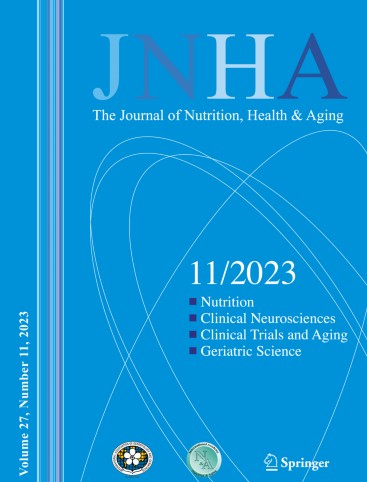超加工食品摄入量与严重非酒精性脂肪肝的关系:对 143073 名英国生物数据库参与者的前瞻性研究
IF 4.3
3区 医学
Q1 GERIATRICS & GERONTOLOGY
引用次数: 0
摘要
背景以往的研究表明,非酒精性脂肪肝(NAFLD)与不健康的饮食模式或营养摄入之间存在联系。然而,超加工食品(UPF)是否会导致非酒精性脂肪肝风险增加,目前仍不清楚。这项研究旨在利用英国生物库的数据,探讨超加工食品的摄入量与严重非酒精性脂肪肝的相关性。这项前瞻性队列研究纳入了英国生物库中的143,073名参与者,采用NOVA分类法确定UPF消费水平,并根据24小时饮食回忆数据进行量化。采用摄入量四分位数的考克斯比例危险模型初步检验了UPF摄入量与严重非酒精性脂肪肝(住院或死亡)之间的关系。在Cox比例危险模型中使用惩罚性立方样条来研究非线性关联。结果在中位 10.5 年的随访期间,有 1,445 名参与者患上了严重的非酒精性脂肪肝。调整后的模型显示,与最低四分位数相比,UPF摄入量较高的人群患严重非酒精性脂肪肝的风险明显增加(HR:1.26 [95% CI:1.11-1.43])。亚组分析显示,体重指数为25或更高的人在UPF摄入量最高的四分位组中风险更大。结论较高的 UPF 摄入量与严重非酒精性脂肪肝的风险增加有关。减少UPF的摄入量是降低非酒精性脂肪肝风险的一种潜在方法。本文章由计算机程序翻译,如有差异,请以英文原文为准。
Association of ultra-processed food intake with severe non-alcoholic fatty liver disease: a prospective study of 143073 UK Biobank participants
Background
Previous studies indicate a link between non-alcoholic fatty liver disease (NAFLD) and unhealthy dietary patterns or nutrient intake. However, it remains unclear whether ultra-processed foods (UPF) contribute to an increased risk of NAFLD. This study aimed to explore how ultra-processed food consumption correlates with severe NAFLD using the UK Biobank data.
Methods
This prospective cohort study included 143,073 participants from the UK Biobank. UPF consumption levels were determined using the NOVA classification and quantified from 24-h dietary recall data. The association between UPF consumption and severe NAFLD (hospitalization or death) was initially examined using Cox proportional hazards models with intake quartiles. Nonlinear associations were investigated using penalized cubic splines fitted in the Cox proportional hazards models. Adjustments were made for general characteristics, sociodemographic factors, body mass index (BMI), and lifestyle.
Results
Throughout the median follow-up period of 10.5 years, 1,445 participants developed severe NAFLD. The adjusted models indicated a significant increase in severe NAFLD risk in higher UPF intake groups compared to the lowest quartile (HR: 1.26 [95% CI: 1.11–1.43]). Subgroup analysis revealed that individuals with a BMI of 25 or higher were at greater risk in the highest quartile of UPF consumption. Sensitivity analyses yielded results consistent with these findings.
Conclusion
Higher consumption of UPF is associated with an increased risk of severe NAFLD. Reducing the intake of UPF can be a potential approach to lower the risk of NAFLD.
求助全文
通过发布文献求助,成功后即可免费获取论文全文。
去求助
来源期刊
CiteScore
7.80
自引率
3.40%
发文量
136
审稿时长
4-8 weeks
期刊介绍:
There is increasing scientific and clinical interest in the interactions of nutrition and health as part of the aging process. This interest is due to the important role that nutrition plays throughout the life span. This role affects the growth and development of the body during childhood, affects the risk of acute and chronic diseases, the maintenance of physiological processes and the biological process of aging. A major aim of "The Journal of Nutrition, Health & Aging" is to contribute to the improvement of knowledge regarding the relationships between nutrition and the aging process from birth to old age.

 求助内容:
求助内容: 应助结果提醒方式:
应助结果提醒方式:


